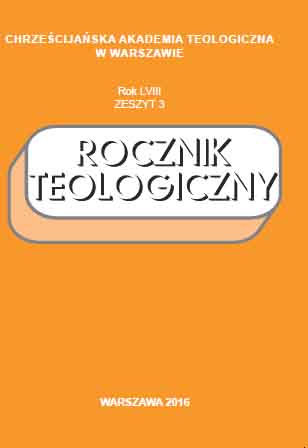Misja historyczna monastycyzmu greckiego na obszarze Italii Bizantyjskiej
The historical mission of Greek monasticism in Byzantine Italy
Author(s): Anna VorozhkoSubject(s): History, Ancient World, Theology and Religion, History of Religion
Published by: Wydawnictwo Naukowe ChAT
Keywords: Southern Italy; Magna Graecia; Great Greece; Italo-Greek monasticism, Arab invasion; Normans; iconoclasm; Greek Church; Latin West; monastic colonisation; golden age of Greek monasticism
Summary/Abstract: Southern Italy's ecclesiastic self-reliance as well as its constancy in following Orthodox canons fostered a large inflow of priests and monks from the Byzantine Empire. Greek monks fleeing Arab invasion and iconoclasm into the Apennine Peninsula played a significant role in spreading Byzantine ideas, liturgical tradition and language. The so-called “historical mission” of Greek monasticism in Southern Italy, which influenced clergy and church hierarchy too, had been fulfilled in the time of its fullest bloom: in the 9th, 10th and 11th centuries. Monasteries created in that period, standing out in terms of theological, philosophical and literary thought, were safe harbours for the traditions of Hellenic humanism and sciences. The greatest development was that of Italo-Byzantine hymnography, manifested by the output of Greek Fathers (monks). Lives and works of these Italo-Greek saints emphasise that historical mission of Byzantine element in Italy, which-regardless of the then-progressing fall-became a link with the Middle East. While the Byzantine Empire had remained to that point in a state of endless war with Muslims, who spared the empire-by not causing serious damage in the political sense-only in Italian provinces, Normans did have brought radical political changes. It was that factor which contributed to obliteration of Greek monasticism in the South of Italy.
Journal: Rocznik Teologiczny
- Issue Year: 58/2016
- Issue No: 3
- Page Range: 319-339
- Page Count: 21
- Language: Polish

